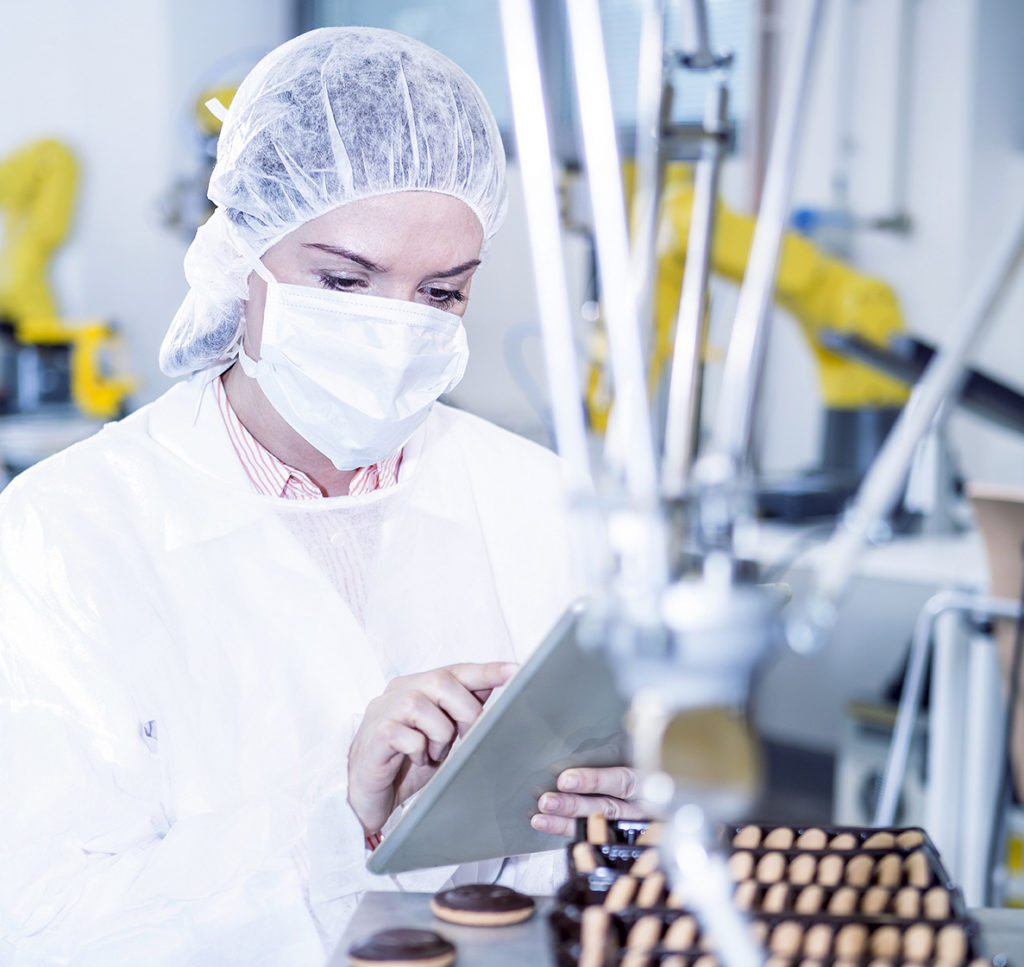Networked packaging systems, robot technology in the warehouse, forward planning: the digitalisation of the food industry is making great progress. But how can food producers best maximise all its advantages? Timo Schaffrath of CSB-System outlines the six main technologies that can help businesses take advantage of today’s Smart Factory
Specially-designed ERP systems
Modern ERP systems are essential in the technology landscape of the Smart Factory. It is only through them that continuous digitalisation can be achieved. The ERP system is the integration hub that connects everything: not just employees, IT systems, machines and sensors, but also sellers and customers.
To be truly successful, the prerequisite is to select a system that has been specially developed for the requirements of food production. Not only can classic processes such as cost and recipe management, and sales and production planning, be optimally supported, machines can also be networked, systems controlled and the information flows between all human and technical players efficiently organised.
Ultimately, it is ERP systems that provide the advantages that are decisive in the food industry: fast processes from ordering through production and logistics to provision on-shelf.
Control room systems
The new generation of control room systems is equally helpful in the digital transformation to a smart food producer. These ensure higher operational efficiency through the forward-looking control and maintenance of machines and systems. Key operating and condition data, for example from packaging machines, are digitally recorded, aggregated and analysed. This enables correlations between machine malfunctions and load parameters to be detected immediately, enabling maintenance work to be carried out early and on schedule so that costly downtimes can be avoided.
One CSB client for example – a leading meat and sausage producer – has been able to optimise the overall system effectiveness of its machines and systems through the introduction of a new control room solution.
Predictive planning
There is no magic formula for dealing with digitalisation, but there are some practical ways in which it can be successfully and smoothly introduced into a factory. Most important in this approach is to recognise that it is better to improve existing processes in small steps than immediately trying to take a huge leap. The planning stage is a good starting point. Predictive production planning systems are already capable of integrating into initial planning scenarios the growing number of variants, and the increasing volatility and sometimes same-day delivery requirements of customer orders. This enables raw materials and supplies to be optimally planned, set-up times minimised, bottlenecks avoided, and short-term changes sensibly implemented. In this way, even the smallest batches can be produced efficiently and cost-effectively.
Web and cloud apps
If you want to make smart production decisions, you need decision-relevant information. The decentralised provision of information is therefore a key factor in effective food production: web and cloud-based apps monitor and control the entire production process and deliver dashboards of business figures, sales figures or production KPIs on a PC, tablet or smartphone. Important information is thus generated and provided where it can add value or where it can best help employees – in the incoming goods department, in production, during order picking, and on-site at the customer. The availability of remote monitoring even allows managers to monitor and control operations out of hours from the comfort of their own homes.
Industrial image processing
In a smart factory, it is no longer just a matter of efficiently recording and processing data. The potential that all this data offers can only be properly realised when the data is evaluated directly in the process, and actions such as sorting raw materials or finished products are automated. Industrial image processing is a key technology to help deliver this. It offers great efficiency gains wherever the human eye reaches its limits in any quantitative measurement. In addition to quality assurance, industrial image processing also improves process efficiencies and the quality of information supplied.
Automated solutions
The automation of individual processes or entire areas in production and logistics opens up many possibilities for food producers to operate more efficiently. This requires a homogeneous IT infrastructure, intelligent data management and a smart workflow in order to manage, monitor, optimise and automate all processes accordingly. Whether fully automated production lines, semi-automated order picking systems or even robot-controlled dispatch warehouses, there are many examples of the positive effect that automated processes can have, particularly in terms of reduced costs and greater flexibility.
Conclusion: Orientated towards real-life scenarios
There are many interesting technologies that can assist in the establishment of Smart Food Factories. In order to successfully start to implement this digital transformation, it is best to focus on established real-life scenarios and to set standards. Digitalisation pioneers such as Amazon, Facebook or Uber are certainly to be admired but for companies in the food industry, they should only be the incentive that encourages these businesses to tackle digital change with a bespoke solution that exactly meets their requirements. The most important thing is to learn to master the new complexity step by step while concentrating on best practices. This will ensure that improvements in production or logistic processes can be made quickly and without great risk.














